At TritonWear, we aim to enable athletes to optimize their speed. Our dedication lies in educating the swimming community about the advantages of incorporating data in training and competitions. To facilitate this, we have introduced the TritonWear Focus Progress Graph, which illustrates improvements in skill execution over time.
To unlock Focus for each swimming stroke, the app requires users to complete a minimum of 20 laps. Additionally, it takes at least five workouts to build a comprehensive swimming profile for each stroke type. By utilizing the Focus Progress Graph, swimmers can gain valuable insights into their technique and track their progress over time. This graph allows users to determine whether they are improving or staying stagnant.
In this article, we will take you on a swimmer's journey through the data, showing you how to use this tool to enhance your training and ultimately swim faster.
Data Can Reveal How You Compare To Your Competition
In the app, you have the option to select a stroke and easily switch between the Myself and Like Me scores for each corresponding metric. These metrics are directly linked to various parts of your swimming technique.
On one hand, the Myself comparison shows how you’re improving your technique day to day. On the other hand, the Like Me comparison evaluates how your skills stack up against your competition. This comparison takes into account swimmers who share the same speed, height, and gender.
*There is no single person the app uses to compare you with; several users create the model.
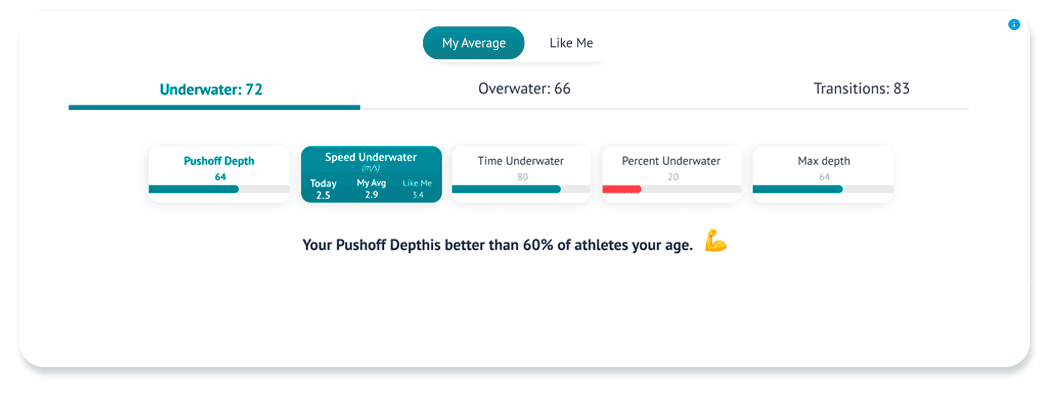
Diving Into The Swimming Analysis
This analysis focused on a male freestyle sprinter training in SCY. In the Focus dashboard below we can see that he scored a 64 for his freestyle. This score is a weighted average calculated from the three phases of his freestyle swimming: the underwater, overwater (stroke technique), and transitions (turns).
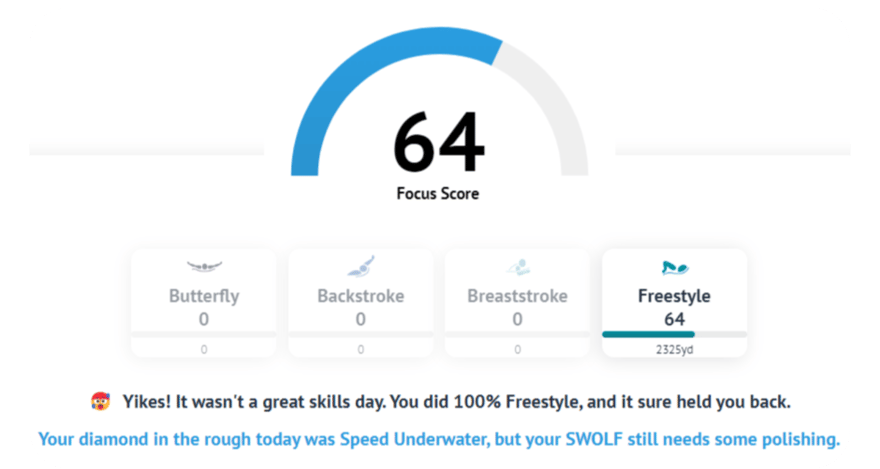
To better understand the athlete’s strengths and weaknesses, we’ll explore where he stands against his competition. Looking at his ‘Like Me’ breakdown below, we see that:
- he is excelling in stroking overwater (76/100)
- but needs to work on his turns (36/100)
- and his underwaters (60/100).
Specifically, in his transitions, we witness a domino effect emerge between his approach, turn, and push-off (Transition Time, Turn Time and Push Time). It seems that a slower turn is contributing to a longer push-off.The initial step in determining the timing of a turn is to evaluate the approach to the wall. If a swimmer has a longer transition time and push time, it may indicate that they are closer to the wall than necessary.
''A score of 75 or higher displays a steady improvement in skills, while anything under 75 requires the swimmer's and coach's attention. ''

The Overall Turn
Next, by clicking on the Transition Time card, we see the Focus Progress Graph populating. This graph illustrates whether the swimmer is getting better at executing the skill or not. Since the goal is faster turns, we want to see the line on the graph for Transition Time trending downward over time.
How to read the Focus Progress Graph
The blue line on the graph below shows that the swimmer started at a Transition Time of 2.87 seconds and has since lowered it to an average of 2.76 seconds. That is almost 0.1 faster on the turns alone, not a bad gain for a sprinter. However, other swimmers like him are averaging at 2.25 seconds, which means there is another half a second to be shaved off there.

.png?width=880&height=258&name=How%20swimmers%20use%20data%20to%20swim%20faster%20(7).png)
*Transition Time= the last stroke entry + glide + turn, until the feet land on the wall
Good transitions begin at the approach. The goal is to lead into the wall fast and translate that speed into the turn and the push-off without compromising form. To do this well, time your strokes coming into the wall and reduce the glide time before initiating the turn.
Learn more on how to fix the freestyle flip-turn approach
The Turn At The Wall
Like his Transition Time, the athlete initially had a slower Turn Time of 1.44 seconds. He did however manage to lower it to an average of 1.37 seconds. Unfortunately, that was still not enough to keep up with the other swimmers in his cohort, who are able to execute the turn in just 1.08 seconds - 0.29 seconds faster than him.

*Turn Time begins the moment the head starts moving down and until the feet hit the wall.
Most swimmers slow their Stroke Rate and glide into the wall before the turn, losing valuable momentum and time. Try to hold the Stroke Rate as you near the wall, by kicking harder. During live workouts, use real-time data to check your Stroke Rate.
The Push Off The Wall
Finally, for his Push Time, the swimmer usually averages 0.45 seconds to spring in and out of the wall on his push-off. So although he managed to lower his Push Time to 0.39 seconds for this session, there are still ways to go to call this an acquired skill. Especially when other swimmers like him are in and out of those walls in as little as 0.32 seconds.
A low push time will translate to faster transitions and more explosive push-offs. The momentum built from the push-off will help set the swimmer up for success on his underwaters.

 *Push Time measures the total time from when your feet first hit the wall, until the moment your feet completely leave the wall.
*Push Time measures the total time from when your feet first hit the wall, until the moment your feet completely leave the wall.
Refining Push Time is a combination of improving Push Strength and Push Max Acceleration with optimal form and technique. It further ensures that you move out of your Transition and into your Underwater phase as fast as possible.
To recap, we used the Like Me comparison to benchmark how much faster the athlete needs to execute each skill in and out of the walls. Next, we’ll shift our focus to the athlete’s ‘Myself’ scores to identify how he is performing these three skills day to day.
Data Can Show You If You're Skills Are Improving
The ‘’Myself’’ displays how technique changed today compared to the last 30 days. The insights below the Focus score highlight what part of swimming needs attention the most.
What’s interesting in the athlete’s Myself cards is that the three phases under his ‘Myself’ are the exact opposite of what we saw for his ‘Like Me’. The ‘Like Me’ showed us that the swimmer was slower on transitions compared to his competition. On the flip side under ‘Myself,’ we see the swimmer focusing and improving on his weaknesses, scoring the highest on his Transitions (80/100).
This is the power of data. The swimmer and his coach have targeted the ''lowest hanging fruits'' and are fine-tuning them every day at swim training. So although the approach to the wall is still holding him back his Turn Time and Push Time help make up for it.
.png?width=263&height=77&name=How%20swimmers%20use%20data%20to%20swim%20faster%20(5).png)
.png?width=839&height=246&name=How%20swimmers%20use%20data%20to%20swim%20faster%20(6).png)
Make the most of the Focus Progress Graph by aiming to improve your technical skills month over month and get a good sense of how your current tracked behaviour in the water affects your swimming speed.

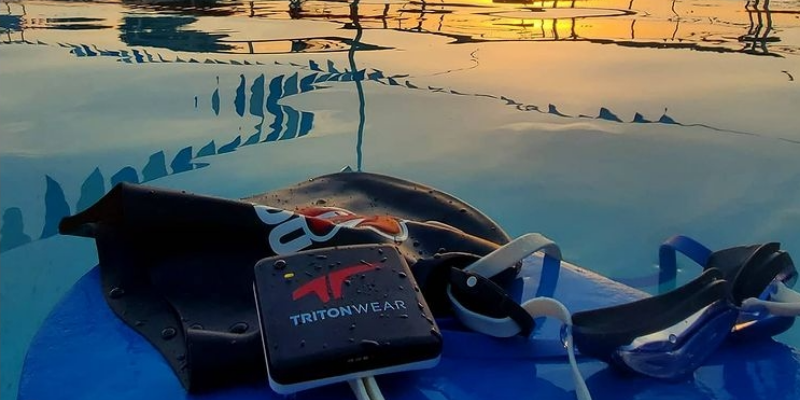


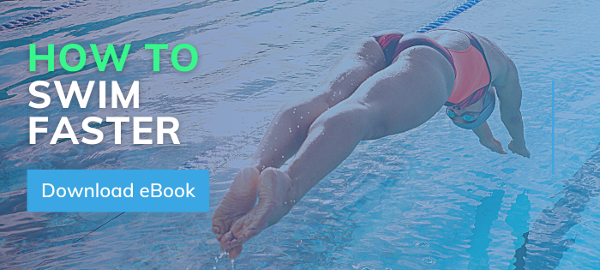

.png)
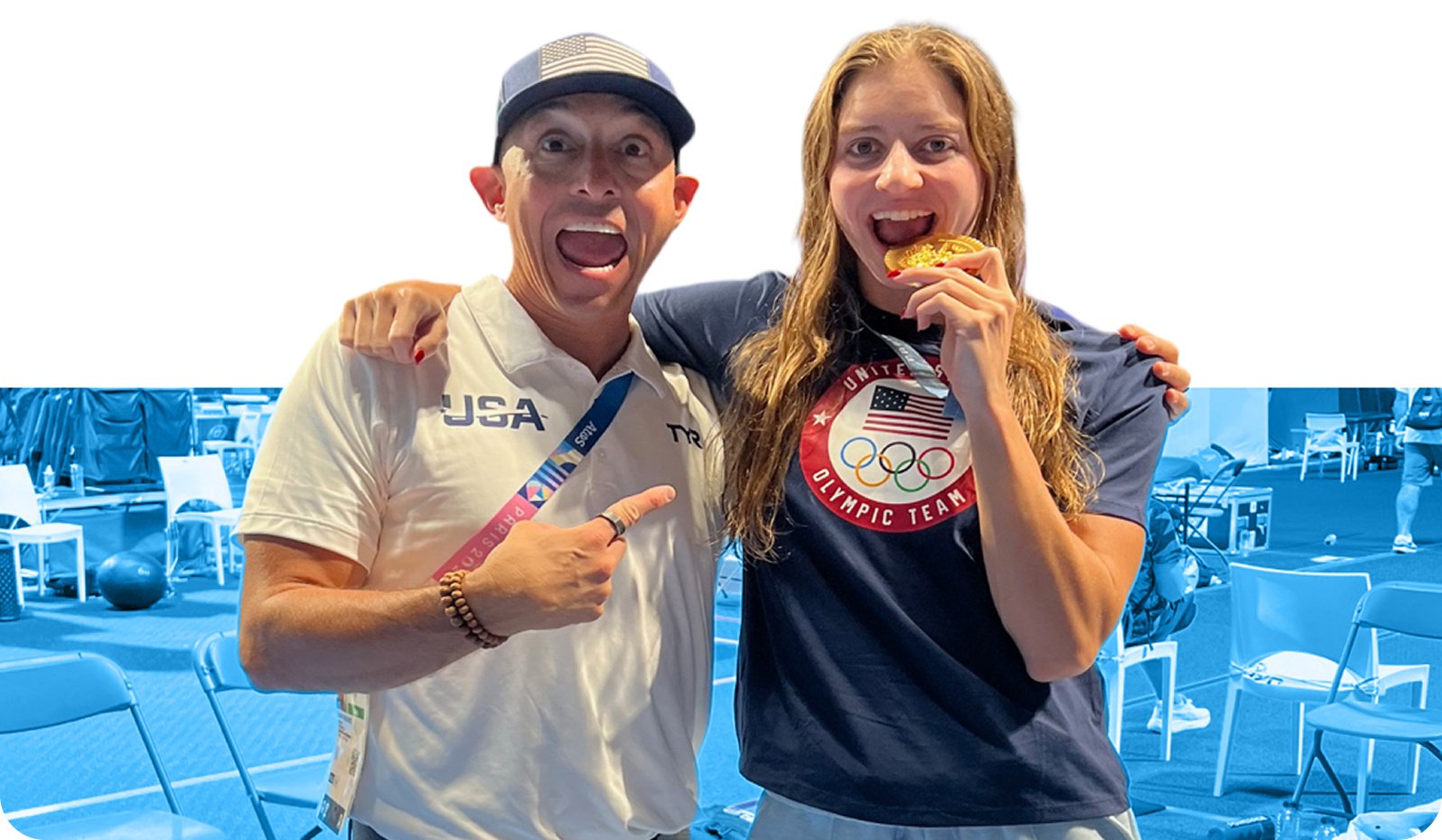
.png)